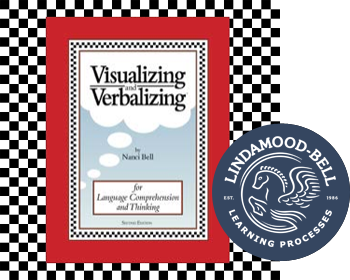UAB Study: Improved Reading and Brain Activity Following Visualizing and Verbalizing Instruction
Lindamood-Bell Press Release
Study Cites Improved Reading and Brain Activity in Children with Autism Following Visualizing and Verbalizing® Instruction
A new study released by the University of Alabama a t Birmingham (UAB), in which a group of children with autism spectrum disorder (ASD) received 10 weeks of intensive instruction utilizing the Visualizing and Verbalizing for Language Comprehension and Thinking® program, found that the instruction “was enough to strengthen the activity of loosely connected areas of their brains that work together to comprehend reading.” The children’s reading comprehension also improved.
t Birmingham (UAB), in which a group of children with autism spectrum disorder (ASD) received 10 weeks of intensive instruction utilizing the Visualizing and Verbalizing for Language Comprehension and Thinking® program, found that the instruction “was enough to strengthen the activity of loosely connected areas of their brains that work together to comprehend reading.” The children’s reading comprehension also improved.
Three groups of children with ASD were studied: 1) the experimental group of children with ASD, 2) a wait-list control group of children with ASD, and 3) a control group of typically developing children. The study revealed, through Functional Magnetic Resonance Imaging (fMRI), widespread changes in functional connectivity of the brain’s reading network as a result of intervention in children with ASD. These findings add new evidence of the ability to alter function of young brains in children with ASD. In addition, the findings support the use of specialized sensory-cognitive intervention to boost the memory and comprehension of children with ASD.
The children received intensive instruction 4 hours per day, 5 days per week, for 10 weeks, of the Visualizing and Verbalizing program, authored by Lindamood-Bell Learning Processes co-founder Nanci Bell. The program develops concept imagery—the ability to create an imaged whole from language—as a basis for comprehension, critical thinking, and memory. The intensive intervention was administered at the Lindamood-Bell Learning Center nearest each of the children.





